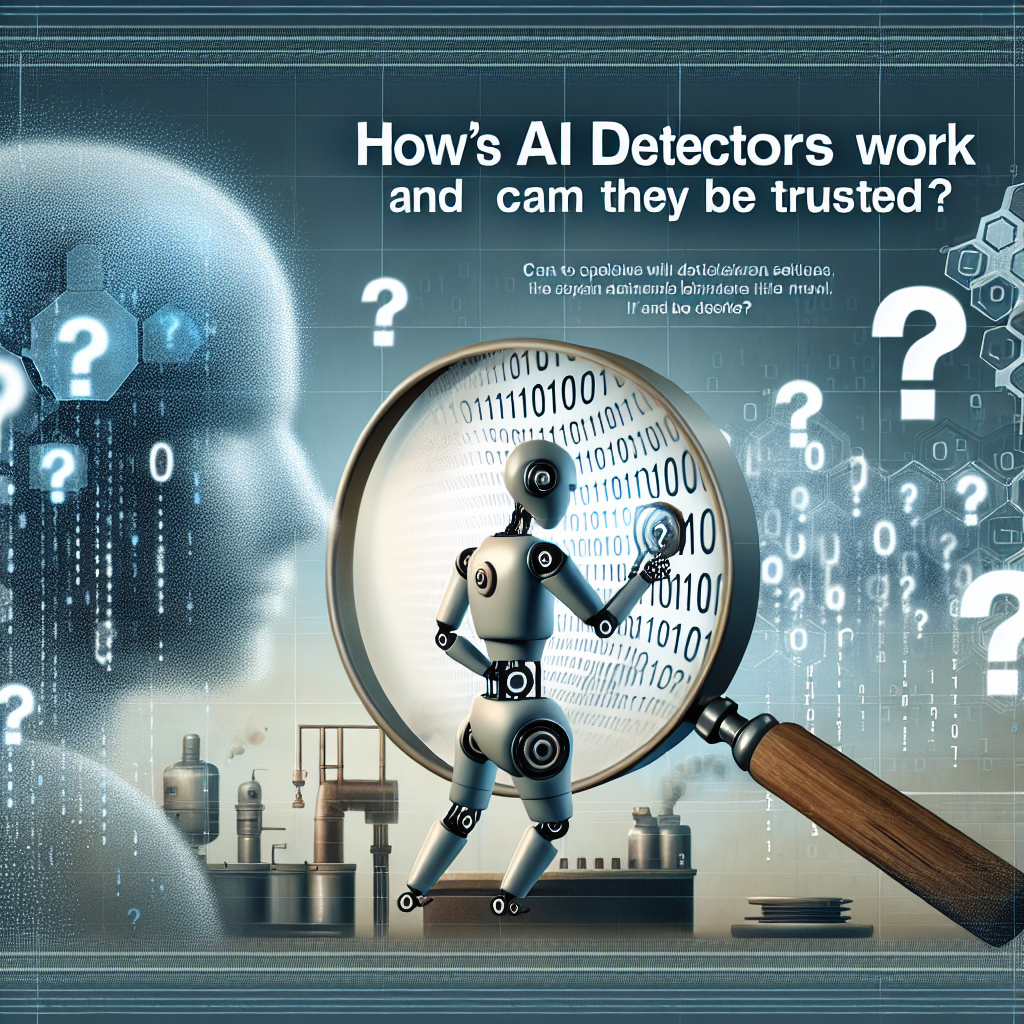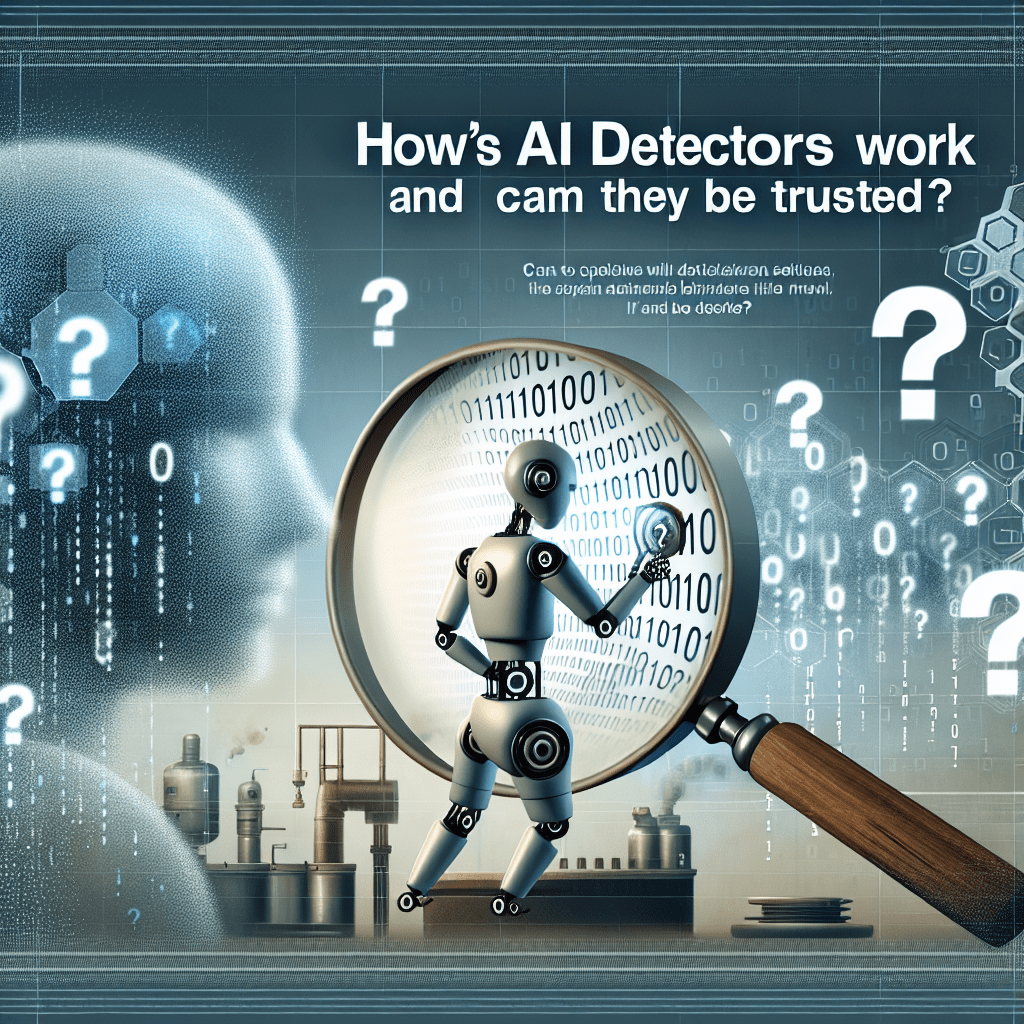How Do AI Detectors Work and Can They Be Trusted?

In an era where artificial intelligence is rapidly transforming the digital landscape, the emergence of AI-generated content has sparked both excitement and concern. As AI language models like ChatGPT become increasingly sophisticated, the ability to distinguish between human-written and AI-generated text has become a pressing issue for educators, publishers, and content creators alike. This has led to the development of AI detection tools, designed to identify machine-generated content. But how exactly do these AI detectors work, and more importantly, can they be trusted?
The Mechanics of AI Detection
AI detectors employ a variety of techniques to analyze text and determine its origin. At their core, these tools use machine learning algorithms trained on vast datasets of both human-written and AI-generated content. By examining various linguistic features and patterns, AI detectors attempt to classify text as either human-authored or machine-generated.
Some of the key methods used by AI detectors include:
-
Perplexity Analysis: This approach measures how predictable a piece of text is. AI-generated content often exhibits lower perplexity scores, meaning it’s more predictable and follows more consistent patterns than human writing.
-
Burstiness Evaluation: Human writing tends to be “burstier,” with more variation in sentence length and complexity. AI detectors look for this natural variability, which is often lacking in machine-generated text.
-
Syntax and Grammar Examination: While AI models are becoming increasingly proficient at mimicking human writing styles, they may still produce subtle grammatical or syntactical patterns that differ from typical human writing.
-
Contextual Understanding: Advanced AI detectors attempt to assess the depth of contextual understanding and coherence in a piece of text, which can be challenging for AI models to consistently replicate.
-
Vocabulary Distribution: The distribution and variety of words used can be a telltale sign of AI generation, as language models may have certain biases or limitations in their vocabulary usage.
The Accuracy Debate
Despite the sophisticated techniques employed by AI detectors, their accuracy remains a subject of intense debate. Several studies and real-world applications have highlighted significant limitations in these tools:
-
False Positives: Many AI detectors have been known to incorrectly flag human-written content as AI-generated. This has led to concerning situations where students and writers have been falsely accused of using AI tools.
-
Inconsistent Results: Different AI detection tools often produce varying results for the same piece of text, undermining confidence in their reliability.
-
Adaptability of AI Models: As AI language models continue to evolve, they become better at mimicking human writing styles, making detection increasingly challenging.
-
Language and Domain Biases: Many AI detectors perform better with certain languages or subject matters, potentially leading to unfair assessments of multilingual or specialized content.
Real-World Implications
The limitations of AI detectors have far-reaching consequences across various sectors:
Education
Universities and schools grappling with the rise of AI-generated essays and assignments have turned to AI detection tools as a potential solution. However, the unreliability of these tools has led some institutions to reconsider their use. For instance, Vanderbilt University disabled Turnitin’s AI detector, citing concerns about false positives and the potential to undermine trust between educators and students.
Journalism and Publishing
As AI-generated content becomes more prevalent, publishers and media outlets are exploring AI detection tools to maintain the integrity of their platforms. However, the risk of falsely accusing writers of using AI could have severe repercussions for professional reputations and editorial processes.
Content Creation and SEO
Digital marketers and content creators are increasingly aware of the potential impact of AI detection on search engine rankings and content authenticity. The fear of being penalized for AI-generated content, even if falsely identified, has led to a renewed focus on demonstrating the human touch in writing.
The Human Element in AI Detection
Given the limitations of automated AI detection tools, many experts advocate for a more nuanced approach that combines technology with human judgment. This hybrid method acknowledges that while AI detectors can be useful indicators, they should not be the sole determinant of content authenticity.
Some proposed strategies include:
-
Transparent AI Use Policies: Encouraging open communication about when and how AI tools are used in content creation.
-
Focus on Process, Not Just Output: Emphasizing the importance of the creative and research process behind content creation, rather than solely judging the final product.
-
Critical Thinking and Analysis: Training readers and evaluators to critically assess content based on its quality, originality, and depth of insight, rather than relying solely on AI detection tools.
-
Continuous Education: Keeping pace with AI advancements and regularly updating detection strategies and educational approaches.
The Future of AI Detection
As AI technology continues to advance, the landscape of AI detection is likely to evolve significantly. Some potential developments include:
-
More Sophisticated Detection Algorithms: Incorporating advanced natural language processing and machine learning techniques to improve accuracy.
-
Blockchain and Watermarking: Implementing technological solutions to verify the origin and authenticity of content from the point of creation.
-
AI-Human Collaboration Tools: Developing platforms that facilitate transparent collaboration between human writers and AI assistants, making the distinction less binary.
-
Ethical AI Development: Encouraging the development of AI models with built-in identifiers or ethical constraints to aid in detection and responsible use.
Conclusion: A Balanced Approach
While AI detectors represent an attempt to address the challenges posed by AI-generated content, their current limitations suggest that they cannot be blindly trusted. Instead, a more holistic approach is needed – one that combines technological tools with human judgment, critical thinking, and a nuanced understanding of the evolving relationship between AI and human creativity.
As we navigate this complex landscape, it’s crucial to foster an environment of trust, transparency, and continuous learning. By doing so, we can harness the benefits of AI in content creation while maintaining the integrity and value of human authorship.
Ultimately, the goal should not be to create an impenetrable wall between AI and human-generated content, but to develop a more sophisticated understanding of how these two can coexist and complement each other in our digital ecosystem. As AI continues to reshape the world of content creation, our approach to detection and verification must evolve in tandem, always keeping the human element at its core.






